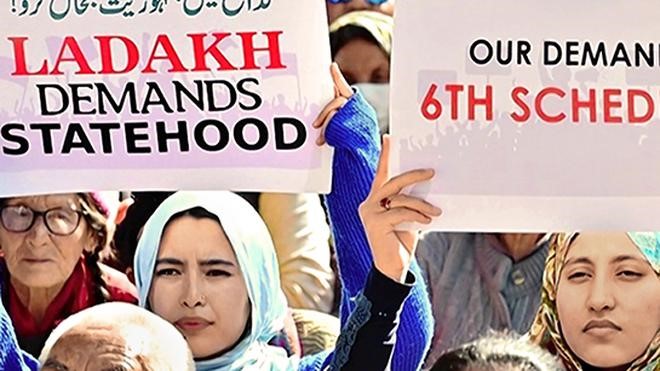
SIXTH SCHEDULE

27.02.2024
SIXTH SCHEDULE , Daily Current Affairs , RACE IAS : Best IAS Coaching in Lucknow
|
For the Prelims:About SIXTH SCHEDULE,Key Point,Key Features |
Why in the news?
The Union Government has recently agreed to examine how the provisions of the Sixth Schedule of the Constitution can be implemented in Ladakh’s context.
Key Point
- Ladakh was converted into a Union Territory (UT) without a Legislative Assembly after the special status of Jammu and Kashmir under Article 370 was revoked by Parliament in August 2019. The erstwhile state was split into the UTs of Ladakh and Jammu and Kashmir. It is estimated that more than 90% of Ladakh’s population is tribal.
About SIXTH SCHEDULE
- The Sixth Schedule of the Indian Constitution contains provisions related to the administration of tribal areas in the states of Assam, Meghalaya, Tripura, and Mizoram.
- It was enacted by the Constituent Assembly in 1949 to safeguard the rights of the tribal population through the formation of Autonomous District Councils.
Key Features:
Autonomous Districts and Regions:
- The tribal areas in these four states have been constituted as autonomous districts.
- If there are different tribes in an autonomous district, the governor can divide the district into several autonomous regions.
Governor’s Powers:
- The Governor of the state is empowered to determine the area or areas as administrative units of the Autonomous Districts and Autonomous Regions.
- The Governor has the power to create a new Autonomous District/Region or alter the territorial jurisdiction or the name of any Autonomous District or Autonomous Region.
District and Regional Councils:
- Each Autonomous District has a District Council consisting of not more than thirty members, out of which four are nominated by the Governor while the rest are elected on the basis of adult franchise.
- Each autonomous region also has a separate regional council.
Tribal Areas under Sixth Schedule:
The tribal areas under the Sixth Schedule are divided into four parts:
- Part I (Assam): The North-Cachar Hills District, The Karbi-Anglong District, The Bodoland Territorial Area District.
- Part II (Meghalaya): The Khasi Hills District, The Jaintia Hills District, The Garo Hills District.
- Part II-A (Tripura): The Tripura Tribal Areas District.
- Part III (Mizoram): The Chakma District, The Mara District, The Lai District
Source: The Hindu